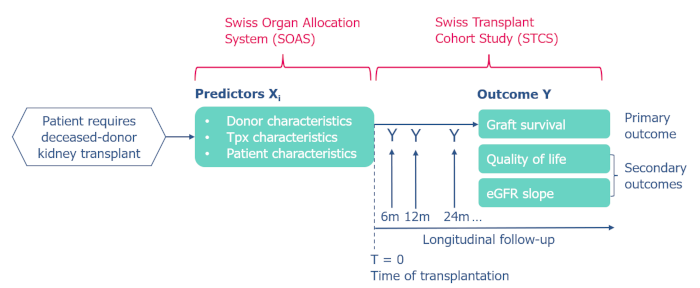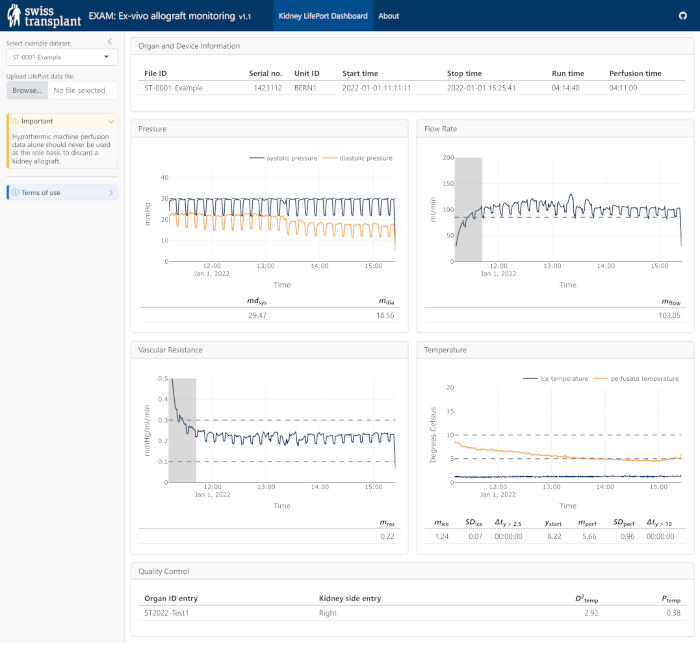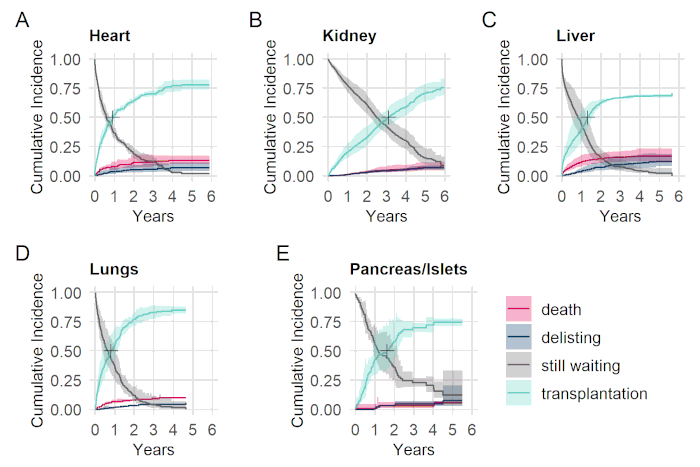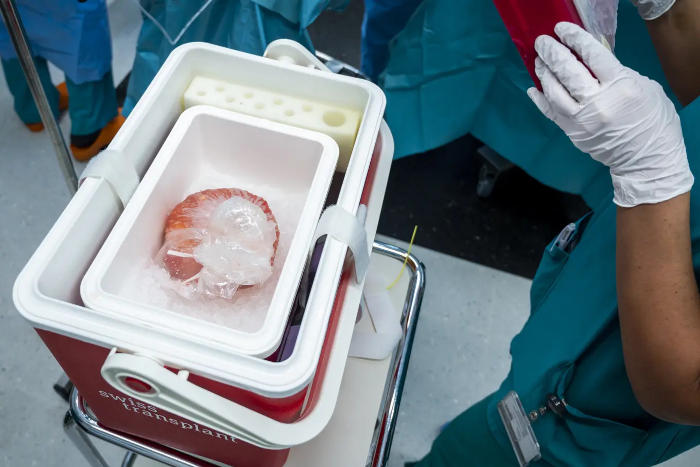Research projects
Below are my research projects, which include links to publications, study protocols, and presentations.
1. KIDMO—Kidney prediction model
KIDMO is a clinical prediction model for the prognosis in kidney transplant recipients at the time of organ offer. It will support decision-making to better understand donor, recipient, and transplant-related risks. The model is currently developed with data from over 2,000 kidney transplant recipients.

Resources
- Study registration from 1. September 2022
- Online risk calculator
- Poster presentation at the ISCB44 in Milano
Publications
Schwab S, Sidler D, Haidar F, et al. Clinical prediction model for prognosis in kidney transplant recipients (KIDMO): study protocol. Diagn Progn Res. 2023;7(1):6. doi:10.1186/s41512-022-00139-5
2. EXAM—Ex vivo allograft monitoring
EXAM is an analytics dashboard for analyzing hypothermic machine perfusion data in deceased-donor kidney transplantation.

Resources
Publications
Schwab S, Steck H, Binet I, et al. EXAM: Ex-vivo allograft monitoring dashboard for the analysis of hypothermic machine perfusion data in deceased-donor kidney transplantation. PLOS Digit Health. 2024;3(12):e0000691. doi:10.1371/journal.pdig.0000691
3. WAIT—Waitlist analysis in transplantation
Median organ waiting times published by transplant organizations may be biased when not appropriately accounting for censoring, death, and competing events. This can lead to overly optimistic waiting times for all transplant programs and, consequently, may deceive patients on the waiting list, transplant physicians, and healthcare policymakers. This study applied competing-risk multistate models to calculate probabilities for transplantation and adverse outcomes on the Swiss national transplant waiting list.

Resources
Publications
Schwab S, Elmer A, Sidler D, Straumann L, Stürzinger U, Immer F. Selection bias in reporting of median waiting times in organ transplantation. JAMA Netw Open. 2024;7(9):e2432415. doi:10.1001/jamanetworkopen.2024.32415
4. REPORT—Reporting and evaluation of prediction models in organ transplantation
Clinical prediction models for prognosis can predict outcomes and support decision-making. Previous research criticized the quality of prediction models concerning poor reporting and the risk of bias. How this applies to prediction models in organ donation and transplantation needs to be clarified. Therefore, this scoping review aims to assess prediction models used in transplant centers in Switzerland and update clinicians on the transparency, quality of reporting, and risk of bias of these tools.

Resources
- Study registration from 6. April 2024
Publications
Schwab S, Banz V, Held U, Hoessly L, Magini G. Does the UK DCD Risk Score have statistical flaws? J Hepatol. 2025;0(0). doi:10.1016/j.jhep.2025.04.030
Projects as a statistical consultant
Hôpitaux Universitaires Genève (HUG)
Donation-after-circulatory death liver transplantation. Outcomes and risk factors for graft loss and ischemic cholangiopathy in the Swiss setting.Universitäts-Kinderspital Zürich
Prediction of the serum creatinine after kidney transplantation in children.Kantonsspital St. Gallen (KSSG)
Outcome of dual kidney transplantation in Switzerland—a national cohort study.University Hospital Zürich (USZ)
Differences between the observed and expected serum creatinine range after kidney transplantation.